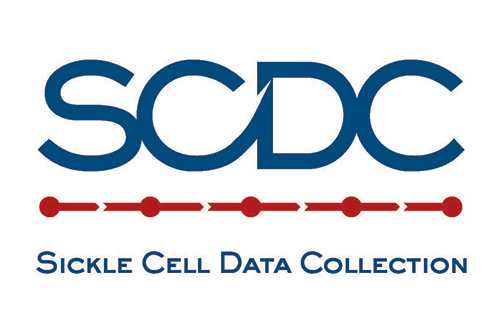Sickle Cell Data Collection (SCDC) Program
The Sickle Cell Data Collection (SCDC) program collects health information about people with sickle cell disease (SCD) to study long-term trends in diagnosis, treatment, and healthcare access for people with SCD in the United States. The program will help inform policy and healthcare standards that improve and extend the lives of people with SCD.
Early screening, diagnosis, and treatment have allowed people with SCD to live much longer, making now a more important time than ever to study SCD health across the life course.
How can the SCDC program improve the lives of people with SCD?
The SCDC program strives to improve health outcomes for people with SCD. By documenting health information of patients with SCD in the United States over time, the program can identify critical gaps in diagnosis, treatment, and healthcare access for people with SCD. For example, while early screening, diagnosis, and treatment have increased the lifespan for people with SCD, there are fewer than five hematologists seeing adult patients with SCD in California, limiting access to proper care and treatment for many adults. The SCDC program will use this type of key information to educate stakeholders about the gaps in care for people with SCD.
Backed by accurate, scientific information, the SCDC program can inform stakeholders about how these gaps can be filled through policy changes, improved healthcare practices, and new medications. Stakeholders include healthcare providers, advocacy groups, policy makers, researchers, drug developers, and federal agencies.

What will the SCDC program help us better understand?
Where people with SCD live
Maps that show where patients, healthcare providers, and healthcare facilities are geographically located can help us answer questions, including
- Can we help patients receive care that is closer to where they live?
- Which areas have high numbers of people with SCD?
Transition from pediatric to adult care
When a person with SCD shifts from pediatric care to adult care, they often experience many changes related to their care. A better understanding of this transition will help us address questions like
- Why do transitioning patients with SCD have the most severe symptoms and higher use of healthcare services?
- How do changes in insurance coverage during transition affect the health of people with SCD?
Hispanic patients
Studies estimate that about 10% of patients with SCD in the United States are Hispanic. By collecting data about this group, the SCDC program can help us understand
- What are the challenges of determining SCD in patients born outside of the United States or born before testing for SCD in newborns began in the United States?
- What other diseases or health conditions are seen in Hispanic patients with SCD?
Older patients
People with SCD are living longer, so we have the opportunity to study them as they become older adults. The SCDC program will take advantage of this opportunity to help figure out
- What common health problems, both related and unrelated to SCD, do patients experience as they age?
- What are the causes of death in people with SCD and can we prevent them?
Use of healthcare services
The information collected by the SCDC program is uniquely able to show how often people with SCD use healthcare services (such as the emergency department), which can help us answer
- Do SCD patients require frequent visits to the hospital and emergency department because they continue to experience health problems related to SCD or because they are not receiving appropriate care?
- Which treatments and healthcare practices help to reduce how often patients require healthcare services?
READ ALL ABOUT IT
How does the SCDC program collect data?
The SCDC program collects information from various sources, including
- Newborn screening records,
- Administrative datasets (for example, hospital discharge, emergency department, and state Medicaid data),
- Death records, and
- Medical charts.
Which states are involved in the SCDC program?
California and Georgia. As more resources become available, we plan to expand the program to include additional states, building the framework for the first national SCD registry with the potential to collect health status, treatment, and healthcare utilization information on every person diagnosed with SCD in the United States.
How is the SCDC program different from previous data collection efforts?
CDC previously developed the Registry and Surveillance System for Hemoglobinopathies (RuSH) and Public Health Research, Epidemiology, and Surveillance for Hemoglobinopathies (PHRESH), which linked data from multiple sources to identify and to gather health status, treatment, and healthcare utilization information about everyone living with SCD in participating states during 2004-2008.
The SCDC program will “carry the baton” from RuSH and PHRESH by gathering and analyzing data from 2004 through 2014, and continuing to collect following years of data as they become available. The program will expand upon previous efforts by documenting aspects of health throughout the entire life course of patients with SCD to answer additional questions. Learning from RuSH and PHRESH, the program will also contribute new areas of expertise in linking data, geographic mapping, data analysis, outreach, and information sharing.
Which organizations are involved in developing the SCDC program?
The CDC Foundation is partnering with CDC’s Division of Blood Disorders, California Rare Disease Surveillance Program, Georgia Health Policy Center, Pfizer Inc., Global Blood Therapeutics (GBT), and Bioverativ to support the initial development and implementation of the SCDC program. Pfizer, GBT, and Bioverativ provide funding support, and the CDC Foundation administers the grants. The SCDC program also includes input from a wide range of partners about the most important questions that can be answered with the data being collected and the key areas of concern for people with SCD and the healthcare professionals who treat them. These partners include
- Aflac Cancer and Blood Disorders Center at Children’s Healthcare Atlanta,
- American Society of Hematology,
- Association of Public Health Laboratories,
- Association of University Centers on Disabilities,
- Augusta University Sickle Cell Center,
- Blood Centers of the Pacific/Blood Systems Research Institute,
- California Health Care Foundation,
- Center for Inherited Blood Disorders,
- Center for Leadership in Disability at Georgia State University,
- Children’s Hospital Los Angeles,
- Children’s Hospital Orange County,
- Georgia Comprehensive Sickle Cell Center at Grady Health System,
- Georgia Department of Public Health,
- Health and Human Services/Office of Minority Health,
- Health Resources and Services Administration/Maternal and Child Health Bureau,
- Kaiser Permanente Southern California,
- The K.I.S. Foundation, Inc.,
- Loma Linda University Medical Center,
- National Institutes of Health/National Heart, Lung, and Blood Institute,
- National Medical Association,
- Sickle Cell Community Advisory Council of Northern California,
- Sickle Cell Disease Association of America,
- Sickle Cell Disease Foundation of California,
- Sickle Cell Foundation of Georgia,
- Universal Data Collection (UDC) System
- University of California Davis Hematology Clinic,
- University of California Irvine Medical Center,
- University of California San Francisco Benioff Children’s Hospital Oakland, and
- Patients and parents of children living with sickle cell disease.
TUNE IN: SCDC PROGRAM WEBINARS

Find out how the SCDC program came to life and where it’s headed.
Listen (Brief registration required)
View presentation slides

What do we know about older patients living with SCD?
Listen (Brief registration required)
View presentation slides
Related Links
- Page last reviewed: August 9, 2017
- Page last updated: August 10, 2017
- Content source:



 ShareCompartir
ShareCompartir



